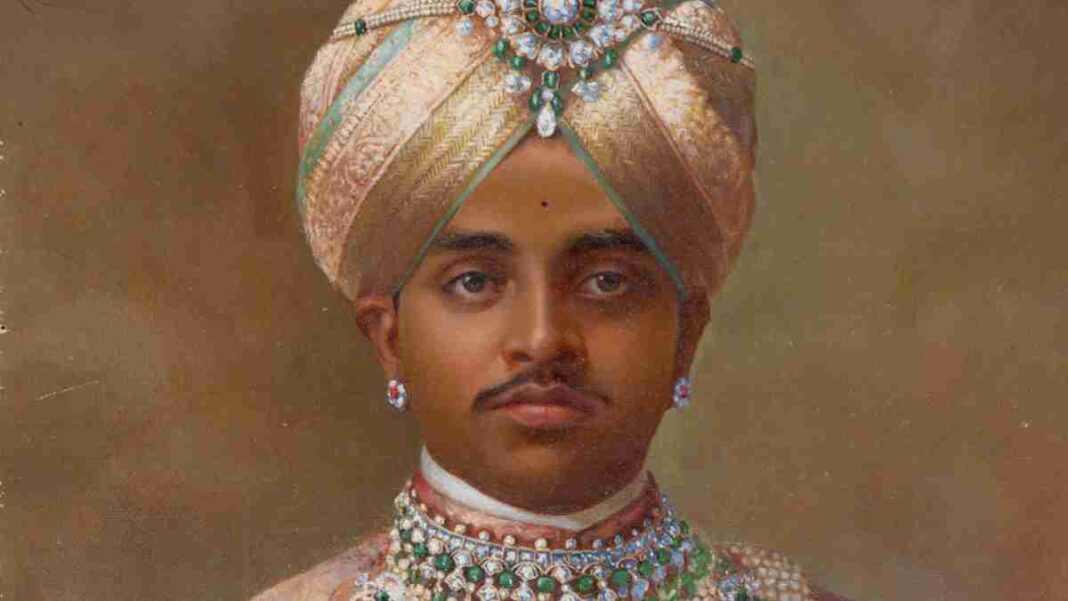INDIA: Krishna Raja Wadiyar IV was the 24th Maharaja of Mysore, ruling from 1902 until his death in 1940. He was a ruling prince, second to none in affection and esteem, inspired by both his attractive personality and impressive administration. He was an incredibly pious Hindu monarch, devoted to his dharma and subjects, popularly deemed a “Rajashri” or “Saintly King,” a name with which Mahatma Gandhi bestowed the king in 1925 for his achievements and administration reforms.
About Krishnaraja Wadiyar IV
Krishna Raja Wadiyar IV, the son of Maharaja Chamarajendra Wadiyar X and Maharani Kempananjammanni Devi, was born on June 4, 1884, in Mysore Palace. After his father, the king, died suddenly in 1894, his widowed queen mother, Devi, ran the state from 1895 to 1902, until her son, Krishna Raja Wadiyar, turned 18.
He ascended the throne at age 18, pledging his entire life for the welfare of people and investing all of his resources to the end. His reign, which spanned 38 years, is often regarded as the “golden age of Mysore.”
Krishna Raja Wadiyar IV designed and built Mysore city meticulously and scrupulously. During his rule, the kingdom of Mysore experienced growth in a range of areas, such as rural reconstruction, education, the fine arts, poverty alleviation, industrial and economic regeneration, and so on.
King Krishna Raja Wadiyar was a leader in India’s modernization. He was often called the “father of modern Mysore” because he was a leader in India’s modernization.
Krishna Raja Wadiyar, who also put a strong emphasis on upholding high standards of cleanliness, built wide roads. He had traveled widely and introduced modern ideas to Mysuru about 150 years ago, elevating it to the status of one of the best-planned cities in the nation.
Viscount John Sankey said at the first Round Table Conference in London in 1930, “Mysore is the best-run state in the world” to praise the King’s good and effective leadership.
In 1881, Mysore became the first state in India to establish a democratic forum known as the Mysore Representative Assembly. During his rule, the assembly was expanded and transformed into a bicameral body in 1907 with the formation of the Mysore Legislative Council, a house of elders that introduced a lot of new laws for the state.
The foundation of modern Mysore
Mysore became the first Indian state to produce hydroelectric power in Asia, and Bengaluru became the first Asian city to receive electricity on August 5, 1905. Banglore’s KRK Market was the first structure to be electrified.
Minto Ophthalmic Hospital, also called Minto Eye Hospital, has been around since 1896, making it one of the world’s oldest eye hospitals. This building was built during the reign of Nalwadi Krishna Raja Wadiyar IV, the King of Mysuru State.

The hospital began operations in the Chikkapete region in 1896, relocated to Lalbagh Lodge in 1897, and then moved to its current location in 1913. It is a 300-bed tertiary ophthalmic hospital.
Victoria Hospital Bangalore was started by Maharaja in 1901 and is the largest hospital in the city. The hospital rose to be among the most eminent in South India and is now renamed Bangalore Medical College and Research Institute.
Hindustan Aircraft Limited (HAL), one of the largest and oldest aerospace and defense producers in the world, was established by Walchand Hirachand in collaboration with the King of Mysore on December 23, 1940.
Maharaja Krishna Raja Wadiyar IV built Krishna Raja Sagara, also known as KRS, during the famine, even though the state’s finances were in bad shape. The dam was named after the king.
The Bank of Mysore Ltd. was founded in 1913 under the patronage of Maharaja Krishna Raja Wadiyar IV.
In 1953, the Reserve Bank of India named “Mysore Bank” as an agent to handle government business and treasury tasks. As a result of the State Bank of India (Subsidiary Banks) Act 1959, it became a subsidiary of the State Bank of India in March 1960.
Krishna Raja Wadiyar IV placed a strong emphasis on the education of Indian students, setting up numerous educational institutions and infrastructure. He played a significant role in the founding of Banaras Hindu University and was the first vice chancellor of the institute. He was also the founder of the University of Mysore.

Bangalore’s IISc (Indian Institute of Science), which had been initiated during his mother’s dominion as regent, functionally began under his rule in 1911 with a gift of 371 acres (1.5 km2) of property and funds.
He outlawed child marriage (for girls younger than 8), placed a high value on girls’ education, and provided scholarships for widowed women. For women, education was made compulsory. The monarch also considered encouraging residents of rural areas to pursue higher education and wanted to give women, Dalits, and people from unprivileged groups priority in hiring.
The King was a patron of Indian music—Hinduatani and Carnatixc—as well as western classics. He was a talented musician and also patronized the fine arts like his forefathers. The Maharaja was an expert on Carnatic and Hindustani music. He performed on eight different instruments: flute, saxophone, violin, piano, nadaswaram, mridangam, veena, and sitar.
Krishna Raja Wadiyar IV married Maharani Pratapa Kumari Devi of Kathiawar on June 6, 1900, at Jaganmohan Palace. She was the youngest daughter of Rana Bane Singh of Vana, Kathiawar, which is now part of Gujarat State. On August 3, 1940, he died of a heart attack. His nephew, Jayachamaraja Wadiyar, took over as Maharaja after him.
At the time of Krishna Raja Wadiyar IV’s death, he was one of the wealthiest men in the world, with a personal fortune valued at US$400 million in 1940. He was India’s second-richest person, behind Nizam Osman Ali Khan.
Also Read: Königreich Deutschland: A Self-declared Kingdom That Refuses to Acknowledge Germany



